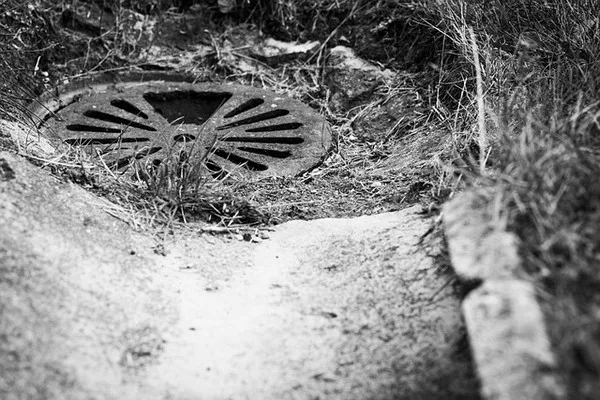Sewage treatment is a crucial aspect of modern sanitation and environmental protection. Among the various stages of wastewater treatment, primary treatment plays a vital role in removing solid and floating materials from sewage before it undergoes further processing. This article will explore what primary treatment of sewage entails, its significance, processes involved, and the technologies employed to ensure effective wastewater management.
As urbanization and population growth continue to rise, the need for efficient sewage treatment becomes increasingly important. Primary treatment is the first step in a multi-stage process designed to protect public health and the environment by treating wastewater before it is released into water bodies or further processed for reuse. Understanding the intricacies of primary treatment is essential for professionals in the field and the general public.
What Is Primary Treatment of Sewage?
Primary treatment of sewage refers to the physical processes used to remove suspended solids and floating materials from wastewater. It is designed to reduce the organic load and improve the quality of sewage before it enters secondary treatment processes. This stage primarily focuses on sedimentation and flotation methods to separate solid waste from liquid.
Key Objectives of Primary Treatment
Reduction of Suspended Solids: The primary aim is to remove solid particles, including organic and inorganic materials, to minimize pollution levels in the effluent.
Reduction of Biochemical Oxygen Demand (BOD): By eliminating a significant portion of organic matter, primary treatment helps decrease the BOD, making the sewage less harmful to aquatic life when discharged into water bodies.
Improvement of Effluent Quality: The process enhances the quality of wastewater, preparing it for secondary treatment methods or direct discharge, depending on the treatment facility.
The Process of Primary Treatment
The primary treatment process involves several stages, each crucial for effective sewage management. The following steps outline the typical sequence of operations:
1. Preliminary Treatment
Preliminary treatment occurs before primary treatment and involves the removal of large debris and solids that can damage equipment. This step may include:
Screening: Screens are installed at the inlet of sewage treatment plants to catch large objects, such as sticks, plastics, and other debris.
Grit Removal: After screening, wastewater passes through grit chambers, where sand, gravel, and other heavy particles settle out.
2. Sedimentation
Sedimentation is the heart of primary treatment. The process involves allowing wastewater to sit in large basins, where gravity causes solids to settle at the bottom. Key components include:
Settling Tanks: Also known as primary clarifiers, these tanks are designed to provide sufficient time for solids to settle. The settled material, called sludge, is removed periodically.
Overflow: The clarified water that rises above the settled sludge is known as effluent. This effluent is then directed to secondary treatment processes.
3. Flotation
In some treatment plants, flotation is used as an alternative or complementary method to sedimentation. This process involves:
Dissolved Air Flotation (DAF): In this technique, air is dissolved in water under pressure and released at atmospheric pressure in flotation tanks. Tiny air bubbles attach to suspended solids, causing them to rise to the surface, where they can be skimmed off.
Technologies Used in Primary Treatment
Various technologies are employed in the primary treatment of sewage to enhance efficiency and effectiveness. Some common methods include:
1. Gravity Settlers
Gravity settlers are large tanks that rely on gravity to separate solids from liquids. The design of these tanks allows for optimal settling time, ensuring that a maximum amount of solids is removed.
2. Mechanical Screens
Mechanical screens are automated systems that remove larger debris from sewage. They can include bar screens, fine screens, and mesh filters, depending on the size of debris targeted.
3. Grit Chambers
Grit chambers are designed to slow down wastewater flow, allowing sand and other heavy materials to settle. They can be designed as horizontal flow or vortex-type chambers.
4. Primary Clarifiers
Primary clarifiers are large circular or rectangular tanks that facilitate the sedimentation process. They may include mechanisms for sludge removal and effluent collection.
5. Dissolved Air Flotation Systems
These systems are increasingly used in primary treatment, particularly for wastewater with high oil and grease content. DAF units enhance the removal of solids and help separate fats and oils from wastewater.
Benefits of Primary Treatment
Primary treatment offers several advantages in sewage management:
Cost-Effective: By reducing the load on secondary treatment processes, primary treatment can lower operational costs and improve overall efficiency.
Reduced Environmental Impact: Effective removal of solids and organic matter helps minimize pollution in receiving water bodies, protecting aquatic ecosystems.
Improved Treatment Efficiency: By pre-treating sewage, primary treatment enhances the effectiveness of subsequent secondary and tertiary treatment processes.
Facilitation of Sludge Management: The separation of sludge allows for easier handling, processing, and disposal or potential reuse.
Limitations of Primary Treatment
While primary treatment is essential, it has limitations:
Inadequate Removal of Nutrients: Primary treatment does not effectively remove nutrients such as nitrogen and phosphorus, which can lead to eutrophication in water bodies.
Limited Pathogen Removal: Many pathogens may remain in the effluent after primary treatment, necessitating further treatment to ensure public health.
Inability to Treat Dissolved Substances: Primary treatment is primarily physical and cannot address dissolved organic materials, requiring additional treatment stages.
Conclusion
Primary treatment of sewage is a fundamental process in wastewater management, aiming to remove solid waste and improve effluent quality. Understanding its processes, benefits, and limitations is essential for effective sewage treatment and environmental protection. By investing in efficient primary treatment systems, municipalities can better manage wastewater, safeguard public health, and protect water resources.
As urbanization continues to challenge existing sewage infrastructure, embracing innovative technologies and practices in primary treatment will be critical for sustainable wastewater management in the future.
Related topics:

